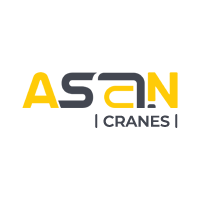 PAGESCONTACT
PAGESCONTACTHow Can Design Crane Platforms

Designing crane platforms involves considering various factors to ensure the safe and efficient operation of the crane.
How Can Crane Platforms Be Designed?
Here are some key steps to consider when designing crane platforms:
- Determine the load requirements
- Select the crane type
- Assess the site conditions
- Structural analysis and design
- Consider safety features
- Accessibility and maintenance
- Obtain necessary approvals
1. Determine the load requirements
Calculate the maximum weight and size of the loads the crane will handle. Consider factors such as the frequency of lifts, load distribution, and potential dynamic forces.
2. Select the crane type
Choose the appropriate crane type based on the load requirements, such as overhead cranes, gantry cranes, or jib cranes. Consider the reach, height, and mobility requirements of the crane.
3. Assess the site conditions
Evaluate the site where the crane platform will be installed. Consider factors such as available space, ground conditions, clearance requirements, and environmental factors like wind loads.
4. Structural analysis and design
Engage a structural engineer to perform the necessary analysis and design of the crane platform. This includes evaluating the structural integrity of the existing building or support structure, designing the supporting columns or framework, and ensuring compliance with relevant building codes and standards.
5. Consider safety features
Incorporate safety features into the design, such as handrails, access stairs or ladders, non-slip surfaces, and adequate lighting. Install safety devices like limit switches, overload protection, and emergency stop systems on the crane.
6. Accessibility and maintenance
Design the platform to allow easy access for operators and maintenance personnel. Consider factors such as walkways, access points for inspections and repairs, and provisions for electrical or control systems.
7. Obtain necessary approvals
Depending on local regulations and building codes, you may need to obtain permits or approvals for the crane platform design. Ensure compliance with all relevant regulations and standards.
It's important to consult with experienced engineers and professionals specializing in crane and structural design to ensure the safety and functionality of the crane platform.
Professional, powerful and reliable industrial cranes, equipments are our core expertise.
ALL PRODUCTS